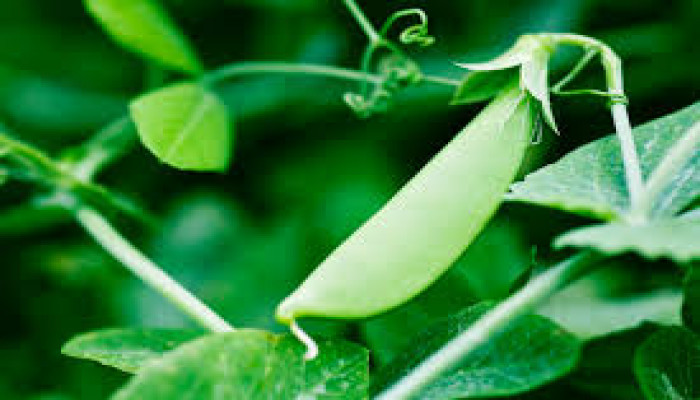Mendel’s Peas, from Statistics to Genetics
- In Mathematics, Science & Technology
- 12:41 AM, Oct 12, 2022
- Chandrahas Halai
Gregor Mendel (born 1822, this is his bicentenary year), an Austrian monk and a teacher of Physics discovered the laws of inheritance during his experiments on the hybridization of pea plants. Being the son of a farmer, during childhood, he had learned how to crossbreed plants. During the period from 1856 to 1863, he bred around 29,000 pea plants in the garden of his monastery.
Many times, we see that a pointed nose of a man makes an appearance in his grandchild which was not visible in any of his children. While cross-breeding plants, Mendel had often noticed that a characteristic of the plants would disappear in the first-generation offspring but reappear in the second generation. He theorized that the first-generation plants contained a kind of hidden factor that was somehow transmitted to the second generation to make a reappearance. We call this hidden factor a gene.
To check his hypothesis, he cross-bred pea plants having different characteristics – Tall plants and short plants, plants having purple flowers and white flowers, those having yellow seeds versus those having green seeds and those having smooth seeds versus those having wrinkled seeds.
To begin with, he procured pea plants having a pure strain of a particular characteristic. To achieve this, he crossed pea plants for many generations. If for many generations the same characteristic makes an appearance and none of the opposite characteristics then it is a purebred.
When Mendel cross-bred large numbers of purebred pea plants with opposite characteristics, he found that one of the characteristics disappeared in the first generation. The characteristic that expressed itself was called the dominant characteristic and the disappearing one was called the recessive.
When these first-generation plants were crossed, the hidden characteristic made a reappearance in the second generation. The ratio of the dominant trait to the recessive trait was approximately 3 to 1.
Table 1 shows the results of Mendel’s cross-breeding of three pairs of plants with opposite characteristics.
|
Characteristics that were cross-bred |
First generation |
Second generation |
|
Tall v/s short |
All tall |
787 tall 277 short |
|
Yellow seed v/s green seed |
All yellow |
6,022 yellow 2,001 green |
|
Smooth seeds v/s wrinkle seeds |
All smooth seeds |
5,474 smooth 1,850 wrinkled |
Table 1
From the data Mendel drew the following conclusions:
Let us consider the crossbreeding of the purebred pea plants having yellow seeds with those having green seeds. Let the gene pair contributing to the purebred pea plants having yellow seeds be represented by YY. Upper-case letters signify that the gene is a dominant one. And let the gene pair contributing to the purebred pea plants having green seeds be represented by gg. Lowercase letters signify that the gene is recessive. The genetic makeup of the offspring of this crossing will be Yg. As the pure yellow seeds parent will contribute the Y gene and the green one will contribute the g gene. Since Y is the dominant gene all the offspring will have yellow-coloured seeds.
Now, let us cross the above first-generation pea plants. We find that the green seeds plants make a reappearance in the second generation. The ratio of the yellow seeds plant to the green ones is approximately 3 to 1. The reason for this probability distribution can be understood from the punnett square given in Table 2. The probability of the Y gene of parent 1 pairing with the Y gene of parent 2 to give the YY is 1/4. The probability of the pairing of Y gene of one parent with the g gene of another parent is 2/4. And the probability of the g gene of parent 1 pairing with the g gene of parent 2 to give the gg is 1/4.
|
|
Parent 2 |
||
|
Y |
g |
||
|
Parent 1 |
Y |
YY |
Yg |
|
g |
gY |
gg |
|
Table 2
Now, let us consider the case of dihybridisation, which is crossing plants having two independent but opposite characteristics. Let us take the case of crossing purebred pea plants having yellow and smooth seeds with plants having green and wrinkled seeds. Let us represent the yellow gene with Y, the green with g, the smooth with S (it is a dominant gene), and the wrinkled with w (it is a recessive gene). The genetic makeup of the two pea plants will be YYSS and ggww. Hence the genetic makeup of the first generation offsprings will be YgSw. Since the yellow and the smooth genes are dominant, they will express themselves in theoffsprings and will mask the recessive green and wrinkled traits. Thus, the first-generationn offspring will have smooth yellow seeds.
Now when these first-generation pea plants are crossed the recessive characteristics will make a reappearance in the second generation. In the second generation, we will have offsprings that will have smooth yellow, wrinkled yellow, smooth green and wrinkled green seeds in the ratio 9:3:3:1. The reason for this probability distribution can be understood from the punnet square given in Table 3.
|
|
Parent 2 |
||||
|
Y S |
Y W |
g S |
g w |
||
|
Parent 1 |
Y S |
YY SS |
YY Sw |
Yg SS |
Yg Sw |
|
Y w |
YY wS |
YY ww |
Yg wS |
Yg Ww |
|
|
g S |
gY SS |
gY Sw |
gg SS |
gg Sw |
|
|
g w |
gY wS |
gY ww |
gg wS |
gg ww |
|
Table 3
This is how Mendel used the statistical data to get the probabilistic distributions. The probabilistic distributions led him to the combinations of the genetic makeup of the offspring plants, which ultimately led him to discover the laws of inheritance and which ultimately laid the foundations of genetics.
The knowledge of combinatorics, probability and statistics is a must for research in any field.
Image source: Genetic Discoveries and Breakthroughs
Disclaimer: The opinions expressed within this article are the personal opinions of the author. MyIndMakers is not responsible for the accuracy, completeness, suitability, or validity of any information on this article. All information is provided on an as-is basis. The information, facts or opinions appearing in the article do not reflect the views of MyindMakers and it does not assume any responsibility or liability for the same.







Comments